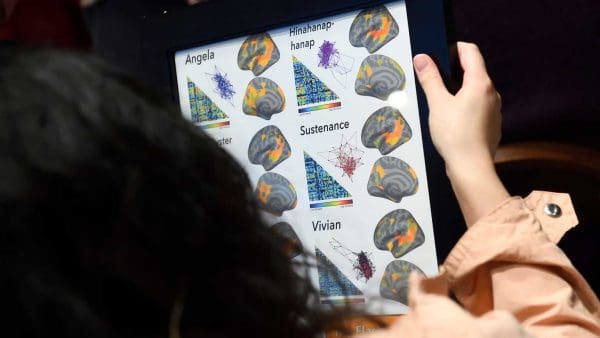Cindy Parker, MD, MPH, director of the Krieger School’s Global Environmental Change and Sustainability Program, and Raychel Santo, a 2013 graduate who majored in GECS, explore the impact of climate change on health.
Many people today see climate change as an overwhelming problem that future generations will have to face. This view makes it easy to justify delaying the personal and societal actions needed to prevent the worst effects of an unstable climate.
Perhaps there are smarter ways to approach this dilemma. Climate change is not a far-off phenomenon of sci-fi writers’ imaginations; we are already seeing its effects today. The way to get people to pay attention, and understand the potential for much more significant harm, may be to point out the effects through the lens of something important to all individuals: their health.
Climate change affects health most directly through extreme weather. While no weather events individually can be attributed to climate change, consensus among leading scientific organizations suggests that the phenomenon is largely responsible for the increased frequency and intensity of hot days and heat waves and for the number of heavy rainfall events.
Extreme weather events affect our most vulnerable populations—children, elders, the poor, and the chronically ill—whose bodies may not take heat stress as easily, may not have access to air conditioning and other important adaptive infrastructure, and may be less mobile and therefore unable to move out of hazardous situations. As climate change’s effects worsen, the range of impacts will increase to affect everyone, regardless of income.
Higher temperatures and shifting rainfall patterns will increase the habitats for disease-carrying mosquitoes and ticks, leading to increased global risk for illnesses including malaria, dengue fever, and Lyme disease. Warmer conditions and increased precipitation and run-off can increase the prevalence of food- and waterborne illnesses. As higher temperatures also worsen ground-level ozone air pollution, people with heart and lung diseases, such as asthma, will be at higher risk for health problems, and healthy individuals will have a greater risk of developing asthma.
Climate change will also affect our water and food supplies significantly. Extreme weather events such as California’s current unprecedented drought (which is threatening the livelihood of millions of residents as well as farmers who supply nearly half of U.S.-grown fruits, nuts, and vegetables) not only drive immediate drinking water shortages but also add increased vulnerability within our food production systems. Considering that nearly a third of the world’s land surface may be at risk of extreme drought by 2100, these implications are gravely concerning. Meanwhile, increased plant pests and disease, shifting planting zones, and ground-level ozone poisoning are further slated to decrease food production. These projections are alarming, especially given the United Nations’ most recent mid-range global population projection of 9.7 billion by 2050, an increase of 2.4 billion people. The population increase, combined with trends of increased demand for resource-intensive animal protein from developing nations like China, signals the very real potential for food and water shortages across the globe.
Displaced populations of individuals from coastal regions, island nations, and other impacted areas will also lead to increased stress on other water, food, and health services systems, at best, or violent conflict, at worst. Where these environmental refugees go, and how they are accepted and integrated into new countries and communities will be critical to avoiding or reducing conflict in the near future—and will undoubtedly impact public health.
We do not need—and cannot afford to wait for—technology to do what needs to be done. We already know what to do and how to do it. It will require drastically different (though not necessarily “worse” and in many ways “better”) lifestyles for those of us in developed countries. This entails flying and driving much less (and when we do, using the highest efficiency, lowest emitting technologies); eating more unprocessed, ecologically grown, and regional foods found lower on the food chain; creatively redistributing resources; avoiding and repurposing waste; and in general, buying less fossil-fuel-intensive materials, from petroleum-based plastic bottles to pesticide-ridden cotton clothing.
It will take more than a few informed individuals changing their lifestyles in this manner. We need widespread structural and societal changes to shift the way we carry out our daily activities. It will be difficult. Addressing the health angle of climate change’s impacts may help individuals and society understand how the changing climate is already affecting us, right now and right here in the United States. This strategy might also facilitate a more accurate vision of what is to come in an unstable, out-of-control climate. Making necessary changes now to stabilize the climate will ensure a happier, healthier future for us all.




